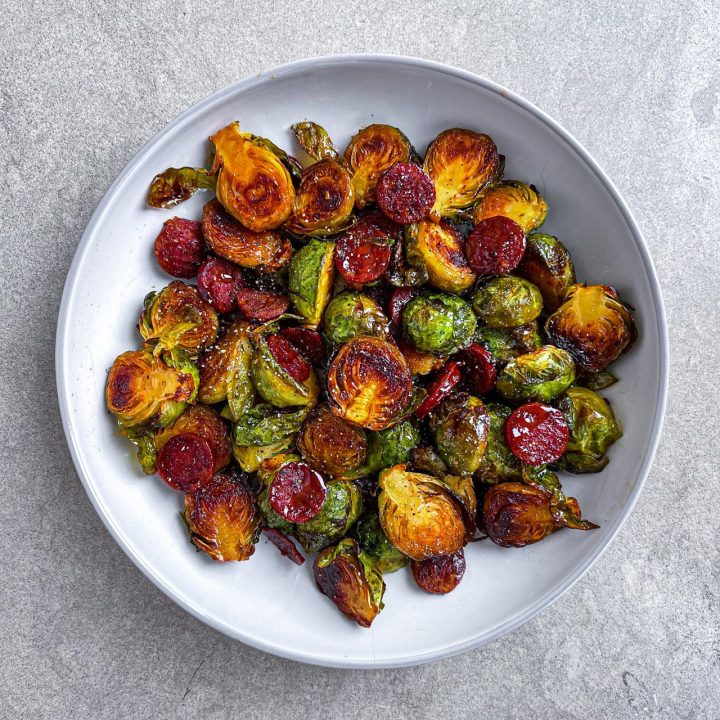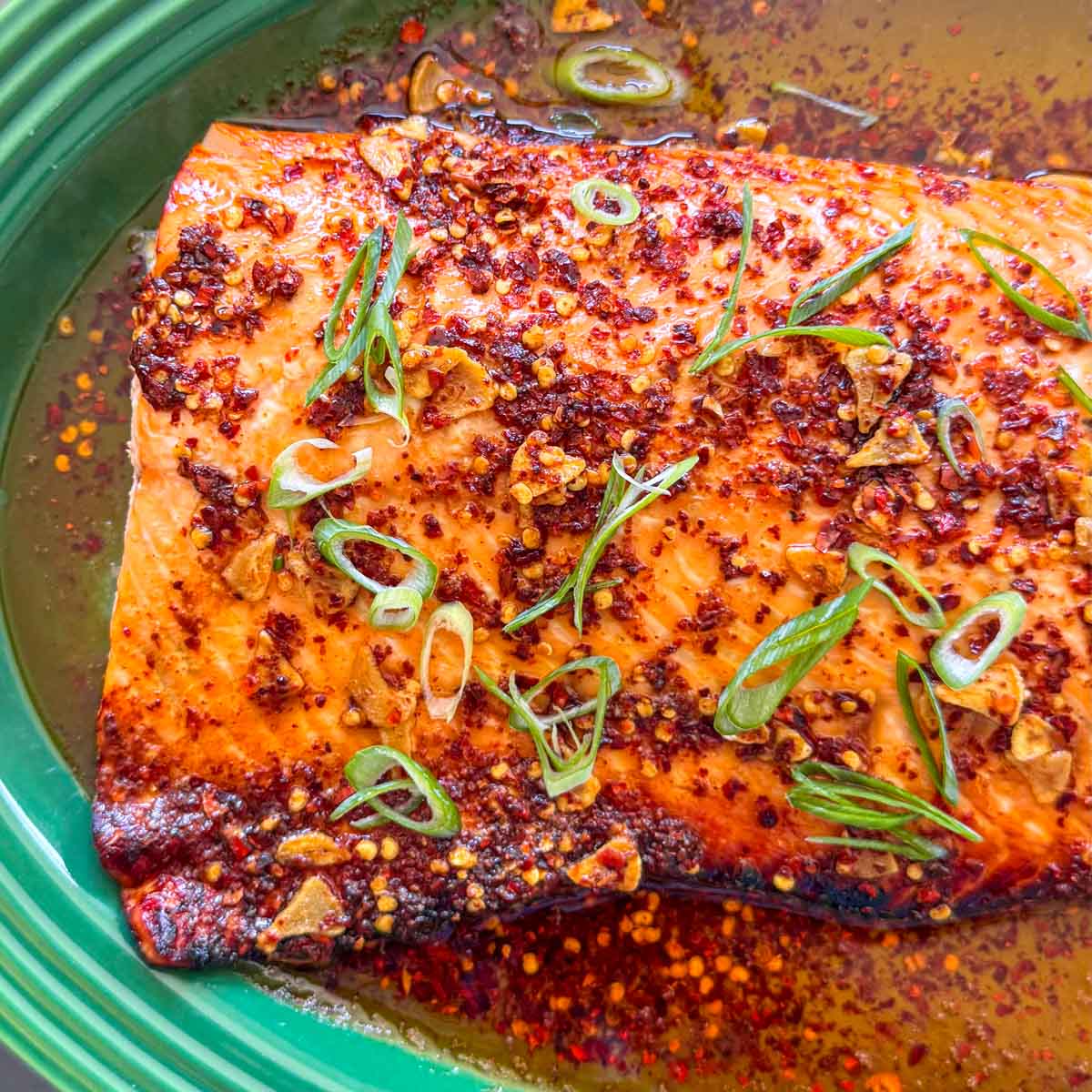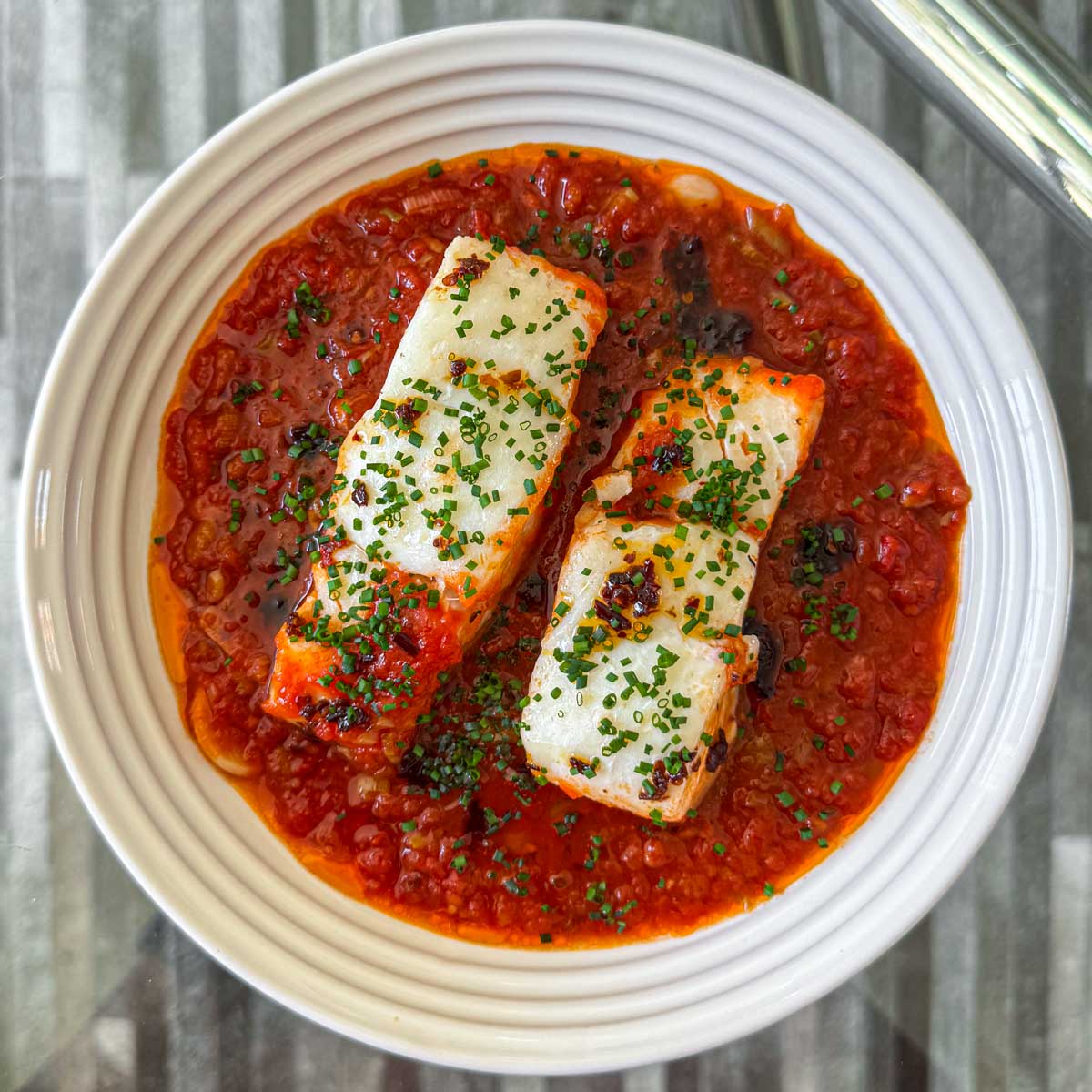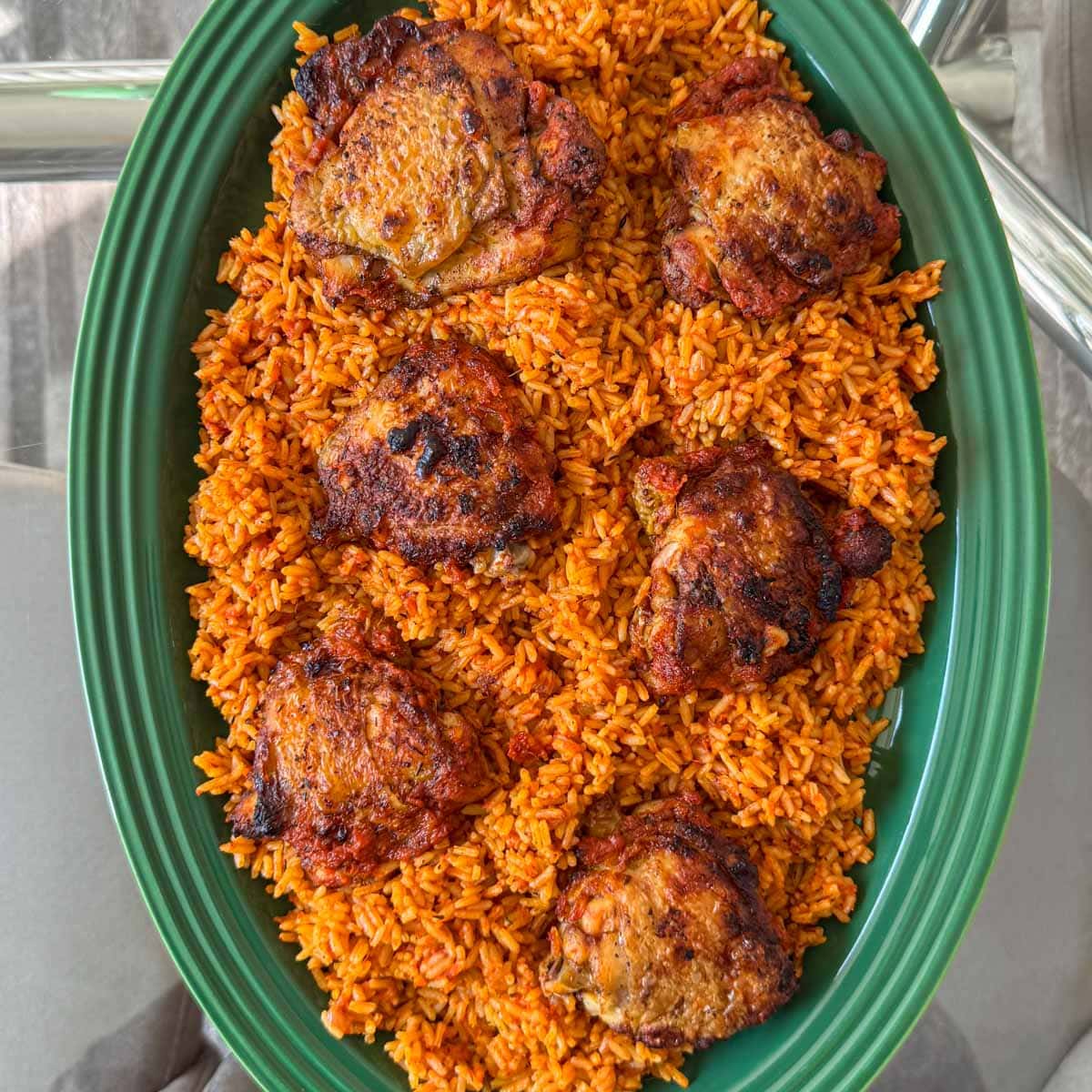A well-made Chorizo & Prawn Risotto is rich, creamy, and bursting with layers of savoury depth. This dish combines the smoky spice of chorizo with the delicate sweetness of prawns, all brought together in a saffron-infused rice that turns every spoonful into pure comfort.
The key to achieving restaurant-quality risotto at home is patience: stirring and gradually adding stock ensures a perfectly creamy consistency. Whether you’re looking for an impressive dinner-party dish or a comforting meal for a cosy night in, this risotto delivers bold flavour with minimal ingredients.
Table of Contents
- Ingredient Breakdown
- Mastering the Risotto Technique
- The Role of Saffron
- Choosing the Right Rice
- Final Touches
- Pairing the Perfect Wine
- Variations and Substitutions
- More Risotto Recipes
Ingredient Breakdown
- Chicken or vegetable stock: Provides the rich base and keeps the risotto moist.
- Saffron threads: Add colour and a delicate floral undertone.
- Extra-virgin olive oil: Enhances depth and brings a smooth texture.
- Sweet onion: Provides a mild, natural sweetness.
- Chorizo: Delivers smoky, spicy richness.
- Garlic: Infuses a warm, aromatic depth.
- Carnaroli or arborio rice: The starchy foundation that gives risotto its signature creaminess.
- Dry white wine: Adds brightness and balances the dish.
- Raw king prawns: Tender and slightly sweet, pairing beautifully with chorizo.
- Grana Padano or Parmigiano Reggiano: Brings a salty, umami richness.
- Flat-leaf parsley: Provides freshness and contrast.
Mastering the Risotto Technique
Achieving the right consistency in Chorizo & Prawn Risotto requires an understanding of starch. When cooked correctly, risotto becomes creamy without needing added cream. This is due to the starch content in the rice. Carnaroli and arborio rice varieties have a high percentage of amylopectin, a type of starch that breaks down during cooking, giving risotto its signature texture.
The constant stirring process isn’t just about even cooking. It also encourages the rice to rub against itself, releasing more starch into the liquid. This is why skipping the stirring step or adding stock too quickly results in a risotto that lacks creaminess. The key is slow absorption, allowing the starch to emulsify with the broth.
Another essential step is toasting the rice before adding liquid. This process, called “tostatura,” coats each grain in oil and intensifies its nutty flavour. The dry white wine further enhances this by deglazing the pan, lifting any caramelised bits from the chorizo and onion for added depth. Skipping these steps results in a flatter, less complex risotto.
Additionally, finishing the risotto with cheese and letting it rest for a few minutes before serving allows the starches to set, creating an even silkier final dish. Small technical adjustments, such as maintaining a gentle simmer and using warm stock, further enhance the texture. Understanding this process transforms an average risotto into a restaurant-quality dish.
The Role of Saffron
Saffron is a key ingredient in Chorizo & Prawn Risotto, contributing both colour and a subtle aromatic quality. Known as the world’s most expensive spice, saffron’s value comes from its labour-intensive harvesting process. Just a few strands can transform a dish, infusing it with a delicate floral and earthy note that enhances the risotto’s overall complexity.
To get the most out of saffron, steep it in warm stock before adding it to the risotto. This releases its full flavour and evenly distributes its golden hue. When combined with chorizo, saffron’s warmth complements the spice, while its slight bitterness balances the richness of the cheese.
Choosing the Right Rice
Not all rice varieties work for risotto, and choosing the right one makes a significant difference in texture. Carnaroli and arborio rice are the best options, as they contain high levels of starch, essential for creating that signature creaminess. While arborio is more common, carnaroli is favoured by chefs for its firmer texture and resistance to overcooking.
The key to perfect risotto lies in maintaining an al dente texture. The grains should be tender with a slight bite at the centre. Overcooked risotto becomes mushy, while undercooked rice lacks cohesion. Achieving the ideal consistency requires close attention and constant tasting towards the end of cooking.
Final Touches
The final steps in making Chorizo & Prawn Risotto can make or break the dish. Once the prawns are cooked and the risotto reaches the desired texture, removing the pan from heat and letting it sit is essential. This resting period allows the starches to settle, resulting in a creamier consistency.
Stirring in the cheese and parsley at the very end ensures they blend seamlessly, enriching the risotto without overwhelming it. The cheese melts into the dish, enhancing umami depth, while the parsley adds freshness, balancing the richness of the chorizo and the seafood.
A final seasoning check is crucial. The saltiness of chorizo and cheese may mean little to no extra salt is needed, but freshly ground black pepper can add warmth and enhance the overall flavour. Served immediately, this risotto delivers a satisfying mix of bold and delicate flavours, with a texture that’s both creamy and indulgent.
Pairing the Perfect Wine
Wine pairing can elevate Chorizo & Prawn Risotto, bringing out its best qualities. The right wine enhances both the dish’s richness and its layered flavours.
- White Wine: A crisp Albariño or Sauvignon Blanc complements the risotto’s saffron and seafood elements, cutting through the richness with bright acidity.
- Rosé: A dry, Spanish rosé works beautifully with chorizo’s smoky spice, offering a refreshing contrast.
- Red Wine: If opting for red, a light-bodied Pinot Noir or a Spanish Garnacha provides just enough structure without overpowering the dish.
Variations and Substitutions
One of the best things about Chorizo & Prawn Risotto is its adaptability. While the classic combination works beautifully, small adjustments can tailor the dish to suit different preferences.
- For extra heat: Use spicy chorizo instead of mild or add a pinch of red pepper flakes.
- For a seafood-forward version: Add mussels or squid alongside the prawns.
- For a vegetarian alternative: Swap chorizo for smoked paprika-roasted mushrooms and use vegetable stock.
- For a richer finish: Stir in a knob of butter at the end for added silkiness.
More Risotto Recipes
If you’ve enjoyed this Chorizo & Prawn Risotto recipe and are on the look for more to try your hand at, look no further!
- King Prawn Risotto: Packed with umami from homemade prawn stock, this risotto is simple yet deliciously rich and creamy.
- Saffron Risotto: This is my version of the great Milanese classic – it’s rich, creamy and absolutely delicious.
- Roasted Butternut Squash and Sage Risotto: A simple yet satisfying vegetarian main that gives a basic risotto a warm, autumnal twist
See how I make all these recipes and more over on my Instagram!
Chorizo & Prawn Risotto
5 Stars 4 Stars 3 Stars 2 Stars 1 Star
No reviews
I’ve said it before and I’ll say it again: the secrets to making a perfect risotto are gradual absorption and constant stirring. It’s what releases the creamy starches from the rice. So yes, this dish needs your undivided attention, but only for 25 to 30 mins. You might even find the stirring therapeutic!
- Prep Time: 10 minutes
- Total Time: 45 minutes
- Yield: 6 1x
- Category: Rice and Risotto, Fish and Seafood
Ingredients
- 1.25 litre good quality chicken or vegetable stock
- 0.3 g saffron threads
- extra-virgin olive oil
- 1 sweet onion (or white onion), finely chopped
- 150 g chorizo, diced
- 2 garlic cloves
- 400 g carnaroli or arborio rice
- 120 ml dry white wine
- 160 g raw king prawns
- 60 g grana padano or parmigiano reggiano
- 1 handful fresh flat-leaf parsley, finely chopped
Instructions
- Bring the stock to a simmer in a medium saucepan over high heat. Add the saffron threads, reduce the heat to low and cover; you want to keep the stock warm over very low heat.
- Heat a generous glug of extra-virgin olive oil in a large saucepan over medium-high heat. Add the onion and chorizo and cook, stirring frequently, until the onion has softened and the chorizo is starting to crisp, around 5 minutes.
- Add the garlic and cook for 1 minute, stirring constantly so it doesn’t burn.
- Add the rice and cook, stirring frequently, until it begins to look slightly translucent, 2 to 3 minutes.
- Add the wine and cook, stirring frequently, until the pan is almost dry, 1 to 2 mins.
- Add one ladleful of the stock and cook, stirring almost constantly, until the stock is fully absorbed. Add another ladleful of stock and cook, stirring almost constantly, until the stock is fully absorbed. Repeat this process until the rice is just about cooked; it should be tender but with a slight bite.
- Add the prawns and another ladleful or two of stock. Cook, stirring almost constantly, until the prawns are cooked – they will go from translucent to pink.
- Remove the saucepan from the heat. Add the cheese and parsley and stir well to combine. Cover the saucepan and allow the risotto to sit for 3 to 5 minutes before serving. You might be tempted to skip this step but don’t! This is when the risotto becomes deliciously creamy.
- Taste and season with salt and freshly-ground black pepper and serve. Enjoy!









